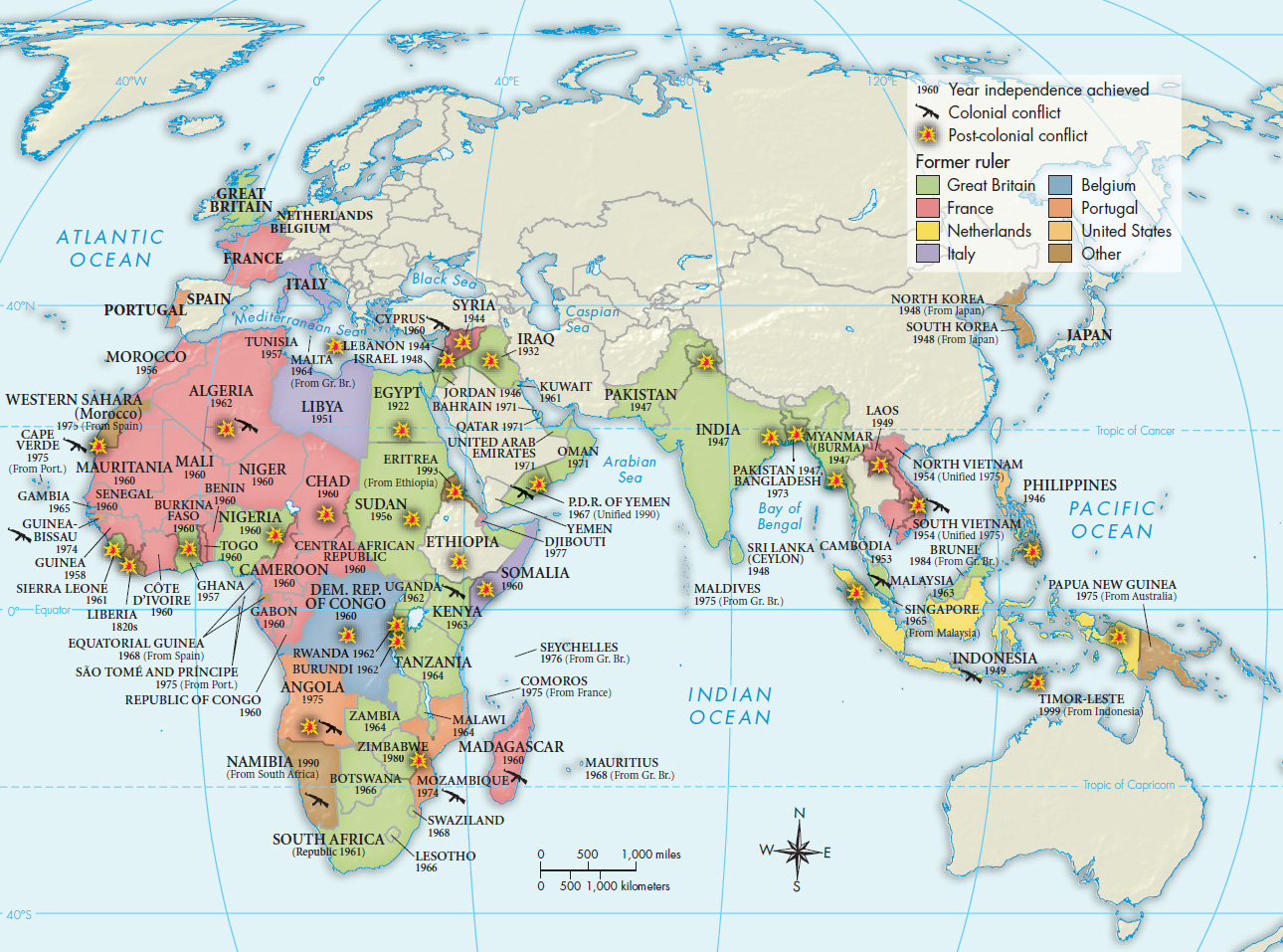A History of Western Society: Printed Page 956
A History of Western Society, Value Edition: Printed Page 963
The End of Empires
What led to decolonization after World War II, and how did the Cold War influence the process?
In the postwar era, in one of world history’s great turning points, Europe’s long-standing overseas expansion was dramatically reversed. The retreat from imperial control — what Europeans called decolonization — remade the world map. In just two decades, some one hundred new nations in Africa, Asia, and the Middle East joined the global community (Map 28.3). In some cases, decolonization proceeded relatively smoothly, with an orderly transition and little violence. In others, the European powers were determined to preserve colonial rule — long a source of profit and national pride — and colonized peoples won independence only after long and bloody struggles.

The Cold War had a profound impact on decolonization. Independence movements often had to choose sides in the struggle between the superpowers. After independence was won, both the United States and the Soviet Union struggled to exert influence in the former colonies, and economic growth and political stability remained elusive in much of Europe’s former empire. Liberation from colonial domination was a proud achievement that brought fundamental gains in human freedom but left lasting problems for the former colonized and colonizers alike.